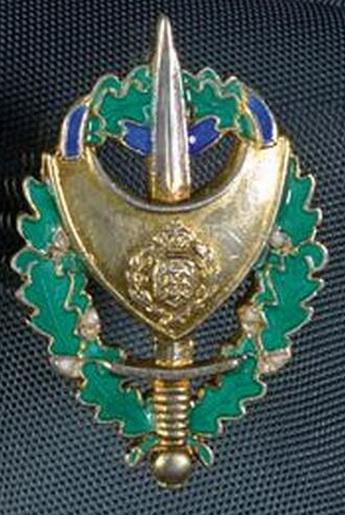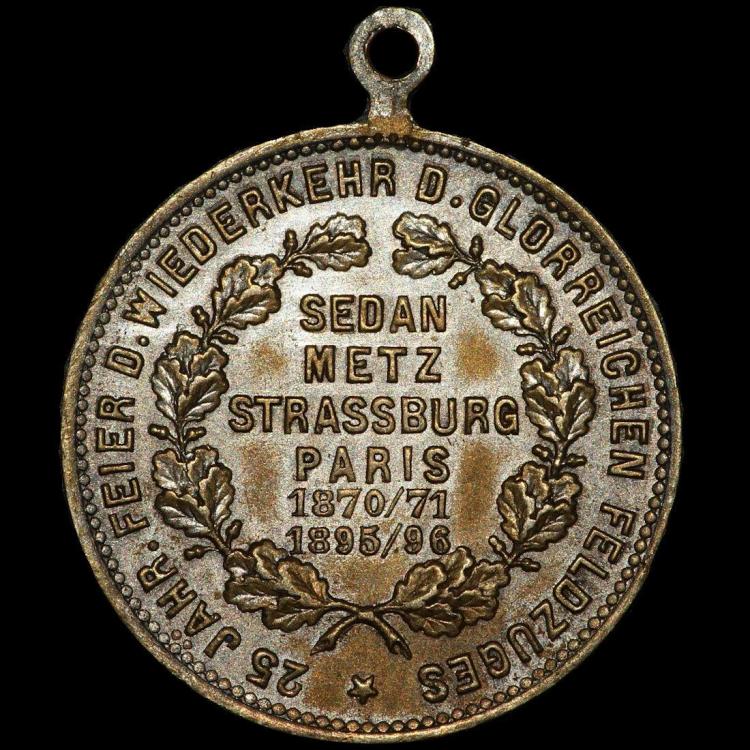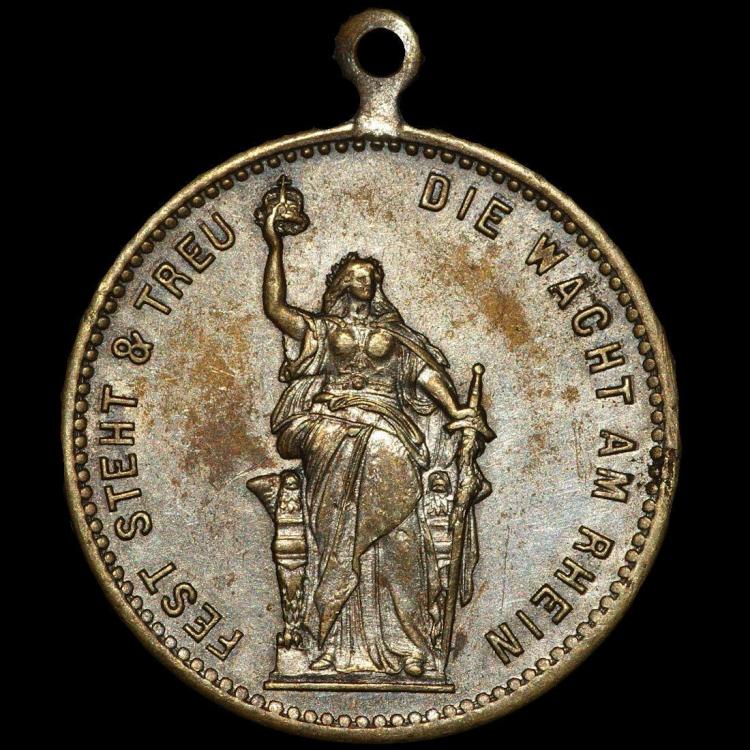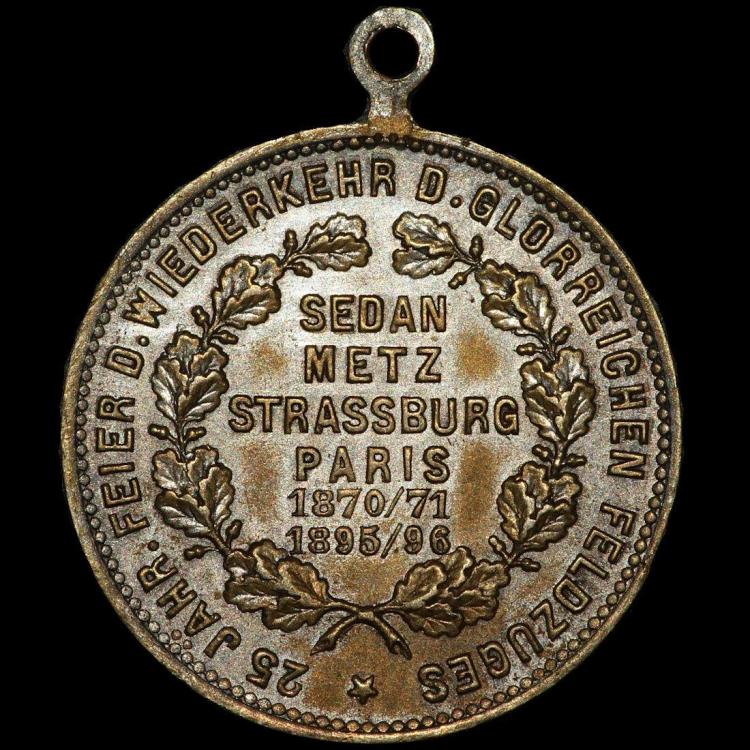-
Posts
4,730 -
Joined
-
Last visited
-
Days Won
7
Content Type
Profiles
Forums
Blogs
Gallery
Events
Store
Posts posted by Gordon Craig
-
-
Gentlemen,
Learned something new again today! Didn't know that Zippo lighters were date marked. Here is a link to a list of date codes etc that might prove useful.
https://www.zippo.com/pages/date-codes
Regards,
Gordon
0 -
Shots Dave,
Thanks for the response and the email. Flat interiors seems to be the norm in post war cases. Don't know about prewar or war time ones. Red seems to have been issued to military personnel and blue to civilians but I haven't done enough research yet to be 100% sure on that.
Regards,
Gordon
0 -
GeroICCCP,
Thanks for the post and the comments. I did a presentation on the Battle of Khalki Gol to the Ottawa chapter of the OMRS a couple of years ago. I was surprised, because of its impact on future Japanese decisions about WWII, that no one had ever heard of it. Glad to hear that someone else finds it worth studying.
Regards,
Gordon
0 -
On 10/04/2020 at 03:40, Shots Dave said:
Hi Guys
I would be interested in your comments on this one. I have seen and read so much, but I am none the wiser. My thoughts/observations in laymans terms would be that the earlier 3rd Class "originals" should be silver and the rings and attachments as the previous example of a decent thickness. I have also shown the box this came in, whether it's the original I can not be certain but possibly it may help indicate a date.
Happy Easter
Dave
Shots Dave,
The eagle on the case appears to be that used post war. I say "appears" because it looks the same as the eagle on a post war case in my collection. I don't have a war time, or prewar, case to compare it to. These crosses were conferred up until 1992 so this may be a post war cross in its case of issue. Is the interior of the case fitted for one of these crosses? I would like to see a picture of the interior of the case.
I am not aware of any discussion on the GMIC comparing war time and post war time crosses so I do not know if there is any difference in the two or not. It would be an interesting comparison.
Regards,
Gordon
0 -
Enzo,
Thanks for adding your interesting comments to the thread. I was somewhat confused by the existence of these Austrian type organizations in Italy and your comments helped very much here. I wasn't aware that Granero had gone out of business. There are a considerable number of the badges they made for sale on ebay.
Regards,
Gordon
0 -
Brian,
My father lived through the First World War, and thus the Spanish Flu, but I never gave the flu much thought in relation to him until I read your thread. The effects on the Spanish Flu on my family was never talked about. My Dad left Canada in 1916 and returned in 1919. Too bad I can't ask him for his recollection of the period.
Regards,
Gordon
0 -
SCHÜTZENKOMPANIE
SEPP INNERKOFLER-SEXTEN
Sepp Innerkofler was a WWI Austrian soldier from the Tyrol area of Austria/Italy. He was a well know mountain guide (Berführer) before WWI. He was born in Sesto/Sexten (Italian/German name) 2 December 1861 and died April 18, 1915. The town is located in Italy. According to the2011 census, 95.37% of the population spoke German, 4.36% spoke Italian and 0.27% spoke Ladin. (Ladin Italian: ladino; German: Ladinisch) is a Romance language consisting of a group of dialects that some consider part of a unitary Rhaeto-Romance language, mainly spoken in the Dolomite Mountains in Northern Italy in the provinces of South Tyrol, Trentino, and Belluno, by the Ladin people. It exhibits similarities to Swiss Romansh and Friulian.)
After Italy declared war on Austria’Hangary in May of 1915 the Standschtützen became part of the army on both sides. Standschützen were rifle guilds and rifle companies that had existed since the 15th and 16th centuries and repeatedly intervened in the acts of war initially only within and later also outside the borders of Tyrol. A standing gunner was a member of a shooting range where he was enrolled and which he committed himself to the voluntary military protection of the state of Tyrol (or Vorarlberg ). Sepp Innerkofler was a member of one of these Standschützen. He was successful in forming, and leading, a group of mountain guides within the Standschützen that successfully carried out a war of movement within the Alps delaying occupation of the area by Italian troops until Austrian troops arrived. These standschützen prevented an Italian army breakthrough. At this time, Austrian troops were fully occupied fighting the war on the Serbian-Russian front and there were relatively few Austrian soldiers available to oppose the Italians in the Tyrol in May of 1915. Sepp Innerkofler was killed while trying to reconquer the summit of Paternkofel that had been captures by the Italian Alpini.
The badge I have in my collection is marked, on the obverse, “STANSCHÜTZENKOMPANIE SEPP INNERFOFLER-SEXTEN-1979". I can not find anything on the net referring to this gathering but it was probably a rifle competition between local Standschützen. The makers mark on the back is to GRANERO a firm that is still producing badges for many organizations. It is a good quality badge in high relief.0 -
ÖSTA,
Very interesting photo. Learn something new every day! Thanks very much for posting the picture.
Regards,
Gordon
0 -
Gentlemen,
Thanks for all over useful information that you have posted. I knew that the auction house description didn't make much sense and didn't really expect to get any answers to my thread so am very please with your response.
larsb001,
If I win the auction and decide to sell this miniature I will certainly contact you. Would be able to tell me who the maker of this piece is who who else made these miniatures?
Regards,
Gordon
0 -
Gentlemen and Ladies if one happens to visit the thread,
I have an artifact that I am unable to identify. It is a miniature and In the auction description it say "officer distinctive, plated & with two crosses for merit in Italian War". I can't tell if the two marks on the back are makers marks or places where a pin and catch used to be. The picture doesn't seem to fit the artifact description in the auction. Does anyone recognize this items and if so what can you tell me about it?
Regards,
Gordon
0 -
Paul R,
On my tunics with ribbons through the second button hole the ends of the each ribbon was sewn individually.
Regards,
Gordon
.
0 -
Paul,
Thanks for your interest. When I first started my research on these medals I only did it in English and not finding anything useful I started this thread. Since I started the thread I did some searches using Spanish and had much more luck. What I was told above is not correct. There was only one class of medal issued for all combatants and it was the silver one. The silver one issued is two sided like the Gold one. I have found nothing on a silver one sided medal yet so research in this area continues. There was a plan at one time to issue a gold medal for the 30th anniversary of the Malvinas campaign but I do not know if this was ever authorized by the government or not so research on the gold one continues as well. The name of the medal in Spanish is Medalla "El Honorable Congreso a los Combatientes en Malvinas. The medals were issued with the recipients name engraved on the reverse of the medal. The original law states that the name should be on the onverse but this does not appear to be the case in the named medals that I have seen pictures of. They were issued in a black case . A diploma was issued with each medal. Here is the law authorizing the medal'
Law 23 118/84
It was sanctioned on September 30, 1984, During the government of Raúl Alfonsín , promulgated through decree 3522 on October 31, 1984 and published in the Official Gazette on November 9, 1984.
Article 1. All those who fought in the war for the territorial claim of the Malvinas, Georgias and South Sandwich Islands, in the war actions from April 2 to June 14, 1982, with a medal and a diploma. The medal will be made of steel, on whose obverse they will wear the national colors and the name and surname of the combatant, and on the reverse the inscription "The Honorable Congress of the Nation to the Combatants". In the diploma the legend of the reverse of the medal will be recorded.
Article 2. The decorations will be of one and only class for all combatants in the war.
Article 3. The civilians and military officers who fought in the war, initiated on April 2, 1982, or in the event of death of the combatant, will be entitled to said decoration, their rightful recipients.
Article 4. The Ministry of National Defense shall remit the list of citizens to be honored, except those that are subject to sanctions in accordance with the requirements of the Code of Military Justice, the Criminal Code and / or its complementary laws.
Article 5.- The citizen who is not included in the payroll prepared by the Ministry of National Defense, in accordance with the preceding article, may request their incorporation, crediting credibly having intervened in the armed struggle for the territorial claim of the Falkland Islands, Georgias and South Sandwich, in the character of combatant.
Regards,
Gordon
0 -
Gentlemen,
I am seeking any, and all, information that anyone can provide me about these Argentine medals. Specifically; 1-when were they authorized; 2-when was the first one awarded; 3-who made the medals; 4-how many were made; 5-did they come in a case or paper packet and what did it look like; 6-how many were awarded. I have been told that the gold medal was awarded to officers and the silver medal to enlisted men. Can anyone give me more information about those awarded/presented with these medals?
My thanks in advance for any assistance that forum members can provide.
Regards,
Gordon
0 -
Bob,
Thanks for the pictures. The last time I was at this museum the main building was still under construction and the only part open was the small building behind the main one. Is the main museum construction completely finished now?
Regards,
Gordon
0 -
DBR1643,
I wouldn't clean this medal. Particularly with this value. Some medals I clean with soap and water but primarily these are medals of relatively low value.
Regards,
Gordon
0 -
I agree with Megan. I find the red hard on the eyes.
Regards,
Gordon
0 -
Claudious,
The War Museum will take longer to visit/see all that is available than the Aviation museum. Both are worth a visit. I would suggest going to the Aviation museum as soon as it opens and spend a couple of hours there then devote the rest of your time to the War Museum. They are on opposite sides of the city so allow at lest 30 to 45 minutes to travel from one to the other. The cafeteria in the War Museum provides reasonable food. I always visit the Friends of the Museum book store in the War Museum when I am there.
Regards,
Gordon
0 -
bolewts58,
Thanks for your comments. I posted the medal on the suggested forum earlier this morning.
Regards,
Grdon
0 -
Gentlemen,
I have a medal that I am trying to research and seek answers to the following questions on the title medal.
1-What did the ribbon look like that it was suspended from?
2-Was it awarded or just purchased as a memento?
3-Who made the medal?
4-Who were the designers and engravers of the medal?
Any info that you can provide on this medal would be appreciated.
Regards,
Gordon
0 -
Gentlemen,
Some questions on this medal;
1-What did the ribbon look like that this medal was suspended from?
2-Who manufactured the medal?
3-Who was the designer etc for this medal?
4-Was it awarded or simply purchased as a memento?
Any thing that you add regarding information on this medal would be appreciated.
Regards,
Gordon
0 -
BalkanCollector,
Yes it is real. I don't have production figures but Romania made a lot of these medals. It is not unusual to find the ribbon for this medal on German ribbon bars of the second world war. I've posted a link to a site I use often for reference purposes. It shows a list of the bars awarded with this medal and pictures of some of the bars. I have not found medals with the bars easy to find.
Regards,
Gordon
0 -
Wessel Gordon,
The book Ian has mentioned lists British, and Commonwealth, medals and gives basic information on each one. These books are heavy and would probably be expensive to mail to your location. Here is a link to a site that sells the annual year book as well as other books on medals.
Regards,
Gordon
https://www.amazon.co.uk/Medal-Yearbook-2019-John-Mussell/dp/1908828439
0 -
Sascha 1998,
The people that told you that the pictures you have posted are of a Bundesmarine tunic are correct. Bundesmarine tunic had three buttons while Kriegsmarine and Volksmarine tunics had five buttons. Here are comparisons between a Kriegsmarine tunic, a Bundesmarine tunic and a Volksmarine tunic. Kriegsmarine tunics are made of wool while both the Bundesmarine and the Volksmarine tunics are made of a gabardine type material. Kriegsmarine tunics had the rank rings sewn into the sleeve seams. So did the Volksmarine tunics while the Bundesmarine tunics did not. It is unusual to see someone use a Bundesmarine tunuc for a conversion to a Kriegsmarine tunic as they are not the same. It is more usual to see a Volksmarine tunic converted to a Kriegsmarien tunic as they are similar in button style etc.
First up a Kriegsmarine tunic.
Next up a Volksmarine tunic followed by a Bundesmarine tunic. The similarities between the Kriegsmarine and the Volksmarine tunics are easily seen. The difference between these two tunics and the Bundesmarine tunic are obvious. There are no makers labels in any of these tunics. Please feel free to ask questions if you have any,
0 -
Peter,
That is a good ribbon bar. Very nice one I might add.
Regards,
Gordon
0








.thumb.jpg.85f13ca2279a9eda7db631a51bbb3094.jpg)
.thumb.jpg.5633d3bc28a32b2f2c9f5fa1a412f738.jpg)
.thumb.jpg.2f3bb582b829f03ec1a20868272c9bf9.jpg)
.thumb.jpg.12dd9404197fa4b74d38e7df7d22f17e.jpg)
.thumb.jpg.e507bf72d219c85616c404c92790a2ac.jpg)
.thumb.jpg.6a1f1b7317eab6067526cfcc703dc7ad.jpg)




Hungary, The Commemorative Medal of the Diósgyőri Steel Works
in Central & Eastern European States
Posted
Richard S.
Nice award, document and thread. There is an interesting posting on WIKI on the town of Diósgyőr and the factory your medal was issued for. https://en.wikipedia.org/wiki/Diósgyőr I'll have to post some of my awards and documents. They have lain dormant since the Hungarian sub forum was closed.
Regards,
Gordon